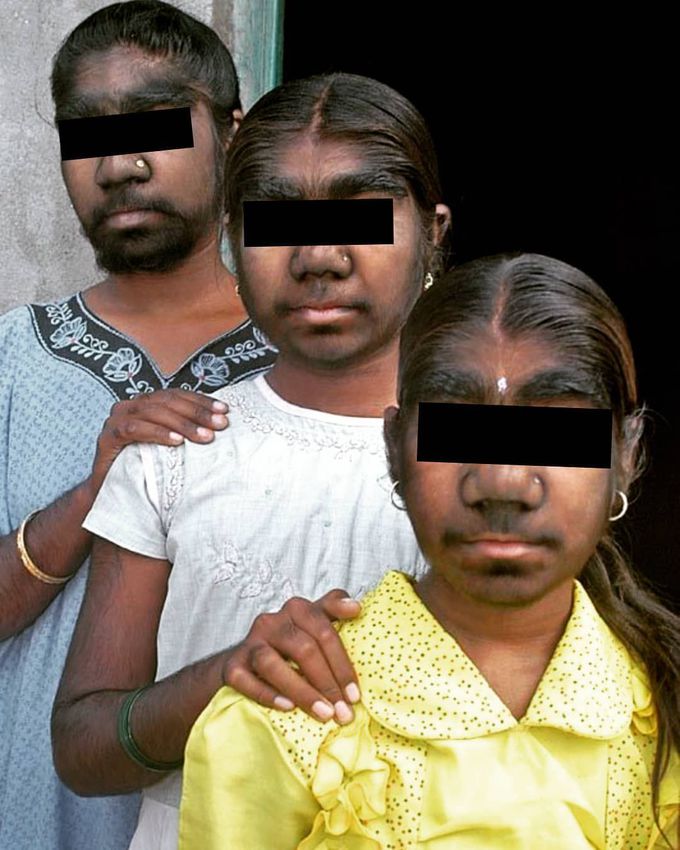


THREE sisters suffering from Werewolf Syndrome.
Hypertrichosis universalis is a genetic mutation, in which cells that normally switch off hair growth in unusual areas, like the eyelids and forehead, are left switched on. It is one of the rarest conditions in the world, affecting just one in a billion people. Congenital hypertrichosis lanuginosa may be caused by an paracentric inversion mutation of the q22 band of chromosome 8; however, it could also be possibly the result of a spontaneous genetic mutation rather than inheritance. This form is an autosomal dominant (not located on the sex chromosomes) cutaneous disorder, that affects the skin. Generalized hypertrichosis Congenital generalized hypertrichosis has a dominant pattern of inheritance and has been linked to chromosome Xq24-27.1.] An affected female (carrying the hypertrichosis gene) has a 50% chance of passing it to her offspring. An affected male will pass this form of hypertrichosis to his daughters, but never the sons. Generalized hypertrichosis terminalis Congenital generalized hypertrichosis terminalis is thought to be caused by genetic changes on chromosome 17 resulting in the addition or removal of millions of nucleotides. The gene MAP2K6 may be a factor contributing to this condition. This condition may also be due to the change in the chromosome affecting the transcription of genes. Medications Several medications can cause generalized or localized acquired hypertrichosis including: Anticonvulsants: phenytoin; Immunosuppressants: cyclosporine; Vasodilators: diazoxide and minoxidil; Antibiotics: streptomycin; Diuretics: acetazolamide; Photosensitizes: Psoralen. The acquired hypertrichosis is usually reversible once these medications are discontinued.
Source: https://www.instagram.com/p/Bquq92OBRep/?utm_source=ig_share_sheet&igshid=18wq4ofhm2nug
